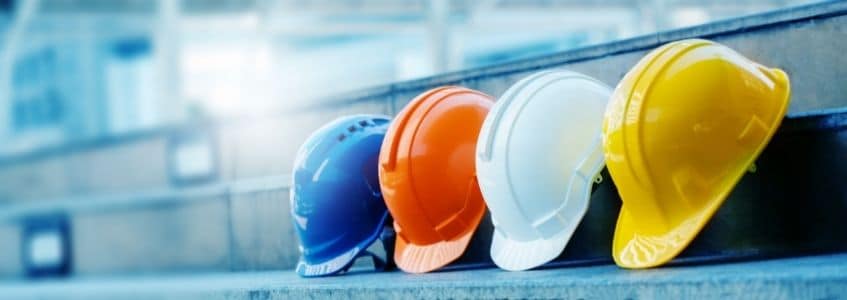Winter environmental services, such as snow removal and ice management, play a crucial role in ensuring the safety and accessibility of various spaces during the cold winter months. However, these tasks come with their own set of hazards and risks that can pose serious threats to both workers and the general public. That's why safety compliance is incredibly important in this line of work.
Throughout this blog post, we will explore the various aspects of safety compliance for winter environmental services. From understanding the hazards and regulations to implementing training programs, we will delve into the strategies and practices that ensure a safe and secure winter environment for all.
What is Workplace Safety Compliance?
Safety compliance refers to adhering to regulations, standards, and best practices to create a safe working environment and minimize the potential for accidents, injuries, or property damage. In the context of winter environmental services, it involves implementing measures to mitigate the risks associated with snow, ice, extreme temperatures, and other winter-related hazards.
Prioritizing safety compliance, allows organizations to not only protect their employees but also uphold their reputation as responsible service providers. It demonstrates a commitment to safeguarding the well-being of workers and the public while delivering high-quality winter environmental services.
Understanding Winter Environmental Hazards
Winter environmental services come with their fair share of hazards that can pose risks to both workers and the public. It is important to understand these hazards in order to effectively mitigate them and ensure a safe working environment.
Common Winter Environmental Service Hazards
- Snow accumulation: Snow accumulation can create slippery conditions, leading to an increased risk of slips, trips, and falls. It can also obstruct walkways, driveways, and parking lots, making it difficult for people to navigate safely.
- Ice formation: Ice formation is another significant hazard during the winter months. It can make surfaces extremely slippery, increasing the likelihood of accidents and injuries. Ice on roads and walkways can be particularly dangerous, as vehicles and pedestrians may lose traction.
- Extreme temperatures: Winter often brings frigid temperatures, which can have adverse effects on workers' health and safety. Exposure to extreme cold can lead to frostbite, hypothermia, and other cold-related illnesses. It is essential to protect workers from prolonged exposure to low temperatures.
- Falling icicles: Icicles hanging from buildings and structures can pose a serious risk to pedestrians and workers below. They can break off unexpectedly and cause injury or damage to property. Proper measures should be taken to remove or mitigate the risk of falling icicles.
- Limited visibility: Winter weather conditions, such as snowstorms and blizzards, can significantly reduce visibility. This can make it challenging for workers to operate equipment safely and for drivers to navigate roads. It is crucial to have proper lighting and reflective materials to improve visibility in low-light conditions.
Safety Regulations and Standards
When it comes to winter environmental services, there are various safety regulations and standards in place to protect workers and ensure the safe execution of tasks.
Winter Services Regulations and Standards
- Occupational Safety and Health Administration (OSHA): OSHA is a federal agency in the United States that sets and enforces safety regulations for workplaces. While OSHA does not have specific regulations solely dedicated to winter environmental services, several existing standards are applicable. These include the General Duty Clause, which requires employers to provide a safe work environment, and standards related to personal protective equipment (PPE), hazard communication, and walking-working surfaces.
- National Safety Council (NSC): The NSC provides guidelines and resources for improving safety practices in various industries, including winter environmental services. Their materials cover topics such as snow removal safety, ice removal safety, and winter weather driving safety.
- Canadian Centre for Occupational Health and Safety (CCOHS): In Canada, the CCOHS offers guidance on winter safety measures for different occupations and provides resources on working in cold environments. These resources cover topics like frostbite prevention, cold stress, and winter driving safety.
- European Agency for Safety and Health at Work (EU-OSHA): EU-OSHA promotes safe and healthy working conditions across Europe. They offer guidance on managing risks associated with cold working conditions, including snow removal and ice management.
Compliance requirements for winter environmental services may vary depending on the region and specific industry. It is essential for organizations to familiarize themselves with the regulations and standards applicable to their jurisdiction. This includes understanding the requirements for PPE, training programs, equipment maintenance, and emergency preparedness. Working with a safety compliance consultant can make it much easier for your business to remain in compliance with workplace safety standards. At Industrial Compliance & Safety our workplace safety experts keep you up to date with your specific industry regulations, allowing you to focus on growing your business.
Workplace Safety Training and Education
Proper training and education are vital components of safety compliance in winter environmental services. By ensuring that employees receive comprehensive training, organizations can equip them with the knowledge and skills necessary to navigate the unique hazards of this field.
Benefits of Workplace Safety Training
- Risk awareness: Through training programs, workers gain an understanding of the risks associated with winter environmental services. They learn to recognize potential hazards such as slippery surfaces, extreme temperatures, and falling ice. This awareness allows employees to take proactive measures to mitigate risks and prevent accidents.
- Safe work practices: Training provides employees with guidance on safe work practices specific to winter environmental services. This includes techniques for proper snow removal, ice management, and equipment operation. By following established best practices, workers can carry out their tasks in a manner that minimizes the potential for injuries and property damage.
- Emergency preparedness: Winter weather conditions can be unpredictable, and unexpected situations may arise. Training programs should include instruction on emergency preparedness, including protocols for dealing with severe snowstorms, power outages, and other weather-related emergencies. This ensures that employees know how to respond effectively and safely in challenging situations.
Topics that should be covered in safety training programs for winter environmental services may include:
- Hazard identification and risk assessment
- Proper handling and use of equipment and machinery
- Techniques for safe snow removal and ice management
- Personal protective equipment (PPE) requirements and usage
- Cold stress prevention and recognition
- Emergency response procedures
- Communication protocols during severe weather events
- Safe driving practices in winter conditions
Personal Protective Equipment (PPE)
Personal Protective Equipment (PPE) plays an important role in safeguarding workers in winter environmental services. It is essential to provide employees with the appropriate PPE and ensure its proper usage and maintenance.
PPE for Winter Environmental Services
- Essential PPE: The following are examples of PPE that may be required for workers in this field:
- Insulated and waterproof gloves: These protect hands from cold temperatures, moisture, and abrasions.
- Slip-resistant boots: Proper footwear with good traction helps prevent slips and falls on icy or slippery surfaces.
- High-visibility clothing: This includes reflective vests or jackets to enhance visibility, especially during low-light conditions.
- Ear protection: Insulated earmuffs or earplugs can help protect against noise from equipment or machinery used in winter environmental services.
- Eye protection: Safety glasses or goggles shield the eyes from debris, snow, ice, and other hazards.
- Proper usage: It is crucial for workers to understand how to properly wear and use their PPE. This includes ensuring a proper fit, adjusting straps or closures as needed, and wearing PPE consistently during work hours. Training programs should cover the importance of wearing PPE and provide specific instructions on its correct usage.
- Maintenance and replacement: PPE should be regularly inspected for damage or wear and tear. Any damaged or faulty equipment should be replaced promptly to maintain its effectiveness. Additionally, employees should be educated on how to clean and store their PPE properly to prolong its lifespan.
Preventing Slips, Trips, and Falls
Slips, trips, and falls are significant hazards in winter environmental services. By implementing these strategies, organizations can create a safer environment for workers and the public during winter environmental services.
Winter Slip, Trip and Fall Prevention Tips
- Clearing ice, snow, and debris: Regularly clearing walkways, driveways, and parking lots of ice, snow, and debris is essential. Use snow shovels, snow blowers, or ice melt products to maintain clear and safe passages. Pay close attention to high-traffic areas, entrances, and stairs where slips and falls are more likely to occur.
- Applying anti-slip measures: Apply anti-slip products, such as sand or salt, to surfaces prone to becoming slippery. These substances enhance traction and reduce the risk of slipping. Ensure that anti-slip materials are used in areas with high foot traffic, including entrances, steps, and ramps.
- Maintaining proper lighting: Adequate lighting is crucial for visibility, especially during winter's shorter daylight hours. Ensure that walkways, stairways, and other outdoor areas are well-lit to help identify potential hazards and navigate safely.
- Using warning signs: Place warning signs in areas where surfaces may be wet, icy, or slippery. These signs serve as a visual reminder for individuals to exercise caution and can help prevent accidents.
- Providing footwear traction aids: Consider providing employees with footwear traction aids, such as ice grips or cleats, to improve stability while walking on icy surfaces. These aids can significantly reduce the risk of slips and falls.
Winter Environmental Services Equipment Safety
Winter equipment, such as plows, snow blowers, and other machinery, play a vital role in winter environmental services. Training employees on safe operation as well as properly mainting your winter equipment can help prevent unnecessary worker injuries and jobsite downtime.
Tips for Equipment Safety
- Maintenance and inspection: Regular maintenance and inspection of all winter equipment are crucial to ensure proper functioning and minimize the risk of accidents. Follow manufacturers' guidelines for maintenance tasks and schedules. Check for any signs of damage, wear, or malfunction before each use.
- Training on safe operation practices: Provide thorough training to equipment operators on safe operation practices. This should include proper starting procedures, handling techniques, and safe maneuvering on different surfaces. Emphasize the importance of following instructions and maintaining situational awareness while operating the equipment.
- Safe fueling and storage: Follow proper fueling procedures, including keeping a safe distance from open flames or ignition sources. Store fuel and equipment in designated areas that are well-ventilated and away from heat sources. Ensure proper containment measures are in place to prevent spills or leaks.
- Visibility enhancement: Equip vehicles and equipment with reflective markings, strobe lights, or other visibility-enhancing devices. This helps improve visibility during low-light conditions and alerts others to the presence of the equipment.
- Risk assessment and control: Before operating equipment, conduct a risk assessment of the work area to identify potential hazards. Implement control measures such as barricades or warning signs to keep pedestrians and other workers at a safe distance from operating equipment.
Emergency Preparedness on The Jobsite
Emergency preparedness is crucial in winter environmental services to ensure the safety of workers and the effective management of unforeseen events. Developing an emergency response plan and providing first aid training and emergency supplies are essential components.
- Developing an emergency response plan: Organizations should create an emergency response plan specifically tailored to winter environmental services. This plan should include clear procedures for various scenarios, such as severe weather events, power outages, or accidents. It should outline roles and responsibilities, communication protocols, evacuation procedures, and contingency plans. Regularly review and update the plan to account for changes in personnel, equipment, or regulations.
- First aid training and provision of emergency supplies: It is crucial to provide employees with first aid training so that they can respond effectively in emergency situations. Training should cover basic first aid techniques, CPR, and the proper use of first aid equipment and supplies. Additionally, ensure that well-stocked first aid kits are readily available on-site and easily accessible. These kits should be regularly inspected and replenished as needed.
Work with Industrial Compliance & Safety for Winter Environmental Services Safety & Compliance
We are a global pre-qualification assistance company based out of Charlotte, NC with over 20 years of expertise in ISNetworld®, Avetta®, PEC® Premier and all the other large and small certification systems out there. We excel in assessing and creating custom safety programs that are tailored for each client’s request for a variety of industrial businesses across the globe .
WE ARE PASSIONATE
As dedicated safety compliance consultants, we have a proven record of accomplishment and are a reputable company in the United States. We ensure that all our work is done with utmost professionalism using our expert knowledge in safety compliance.
HONEST AND DEPENDABLE
We are transparent with our services, costs, and programs. We value your trust in us to evaluate and meet your company’s needs. We take pride in proving ourselves reliable and trustworthy as we build our working relationship with another!
COMPETITIVE PRICING
We offer a great service that is at a low cost to you! Talk to one of our certification experts today to get a quote!
YOUR TIME IS IMPORTANT
We value your time as an owner or manager running a business. Open communication that provides clear and realistic expectations on deadlines and schedules is key. Industrial Compliance & Safety provides the most cost effective and efficient products to you and your business.
Prioritizing safety in winter environmental services is a must for the well-being of workers and the overall success of any organization. By implementing comprehensive training programs, providing appropriate personal protective equipment, minimizing the risk of slips, trips, and falls, ensuring equipment safety, and developing emergency preparedness plans, businesses can create a safer work environment. However, navigating the complexities of safety compliance can be challenging. That's where Industrial Compliance & Safety, a leading safety consultant service, comes in. Our team of experts specializes in providing tailored solutions to help businesses achieve and maintain regulatory compliance, enhance safety practices, and mitigate risks. Don't compromise on safety—reach out to Industrial Compliance & Safety today and take the necessary steps to safeguard your workforce and ensure a culture of safety in your organization.
Ready To Get Compliant Today?
Call us or complete the form below!





